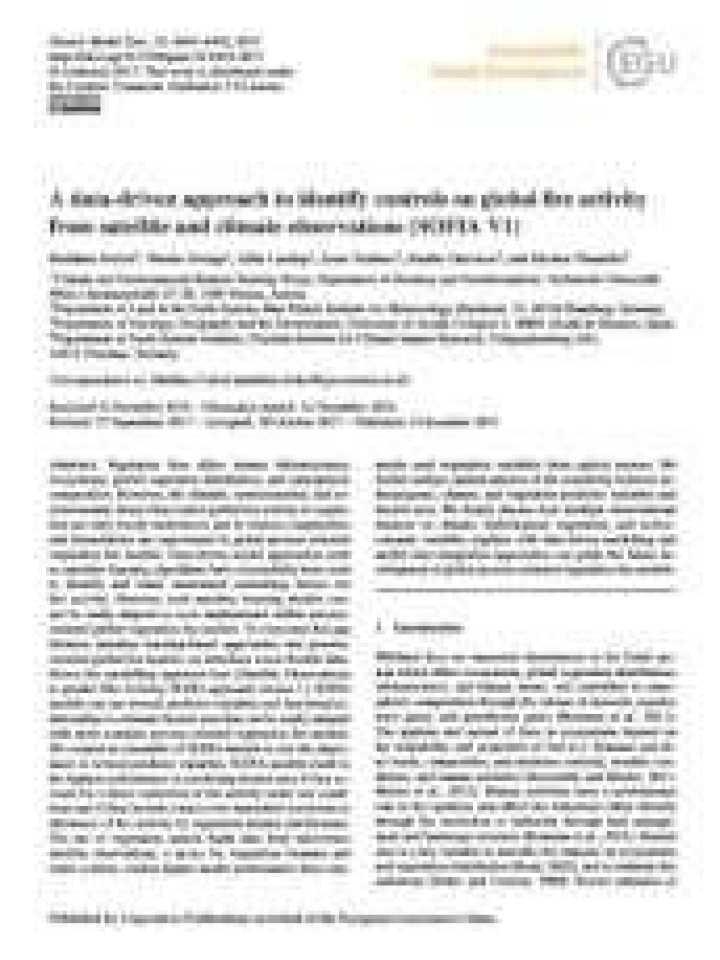A data-driven approach to identify controls on global fire activity from satellite and climate observations
Vegetation fires affect human infrastructures, ecosystems, global vegetation distribution, and atmospheric composition. However, the climatic, environmental, and socioeconomic factors that control global fire activity in vegetation are only poorly understood, and in various complexities and formulations are represented in global process-oriented vegetation-fire models.
Data-driven model approaches such as machine learning algorithms have successfully been used to identify and better understand controlling factors for fire activity. However, such machine learning models cannot be easily adapted or even implemented within process-oriented global vegetation-fire models.
To overcome this gap between machine learning-based approaches and process-oriented global fire models, we introduce a new flexible data-driven fire modelling approach here (Satellite Observations to predict FIre Activity, SOFIA approach version 1).
SOFIA models can use several predictor variables and functional relationships to estimate burned area that can be easily adapted with more complex process-oriented vegetation-fire models. An ensemble of SOFIA models was created to test the importance of several predictor variables. SOFIA models result in the highest performance in predicting burned area if they account for a direct restriction of fire activity under wet conditions and if they include a land cover-dependent restriction or allowance of fire activity by vegetation density and biomass. The use of vegetation optical depth data from microwave satellite observations, a proxy for vegetation biomass and water content, reaches higher model performance than commonly used vegetation variables from optical sensors.
The paper further analyses spatial patterns of the sensitivity between anthropogenic, climate, and vegetation predictor variables and burned area.
Finally, the paper discusses how multiple observational datasets on climate, hydrological, vegetation, and socioeconomic variables together with data-driven modelling and model–data integration approaches can guide the future development of global process-oriented vegetation-fire models.
Explore further
